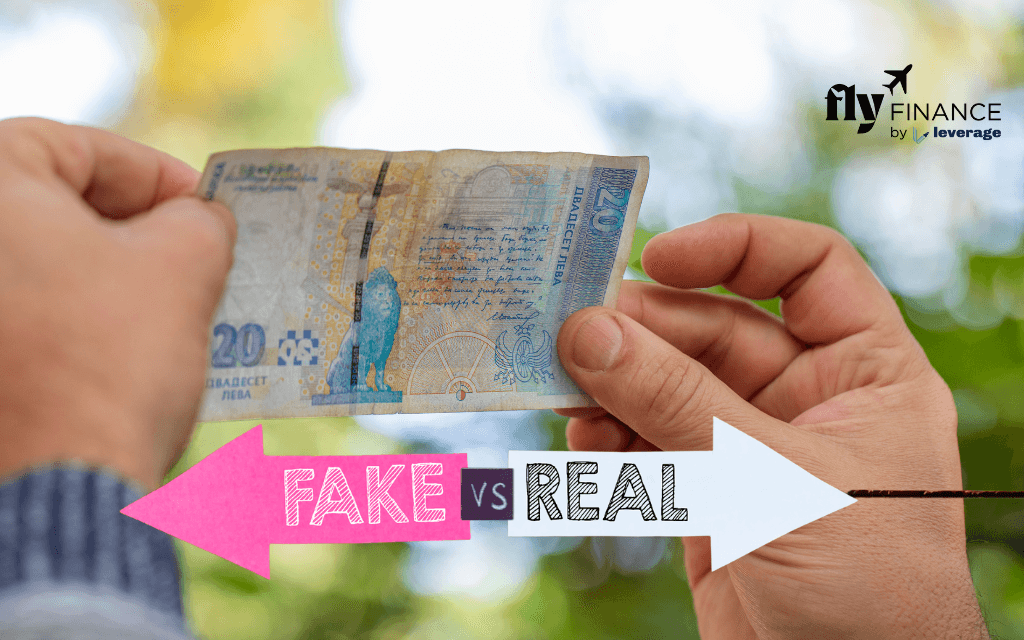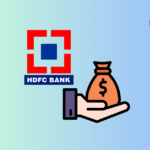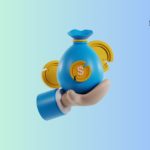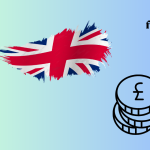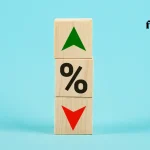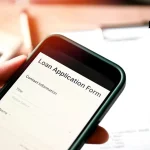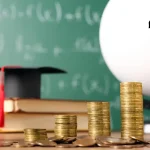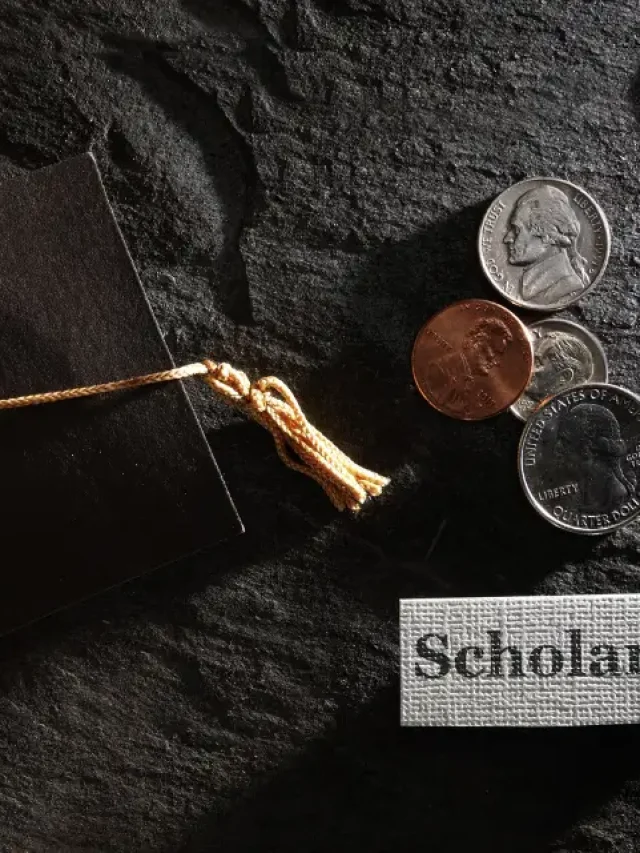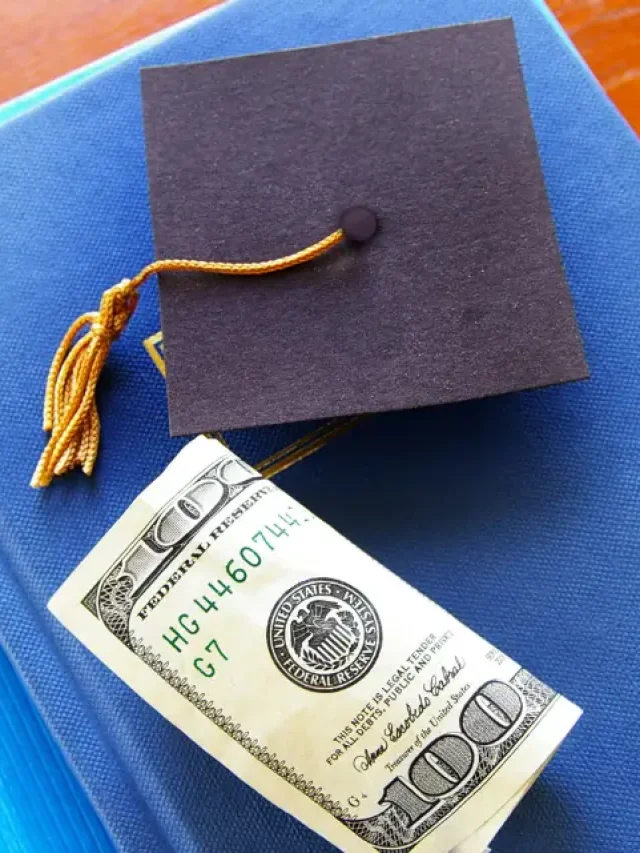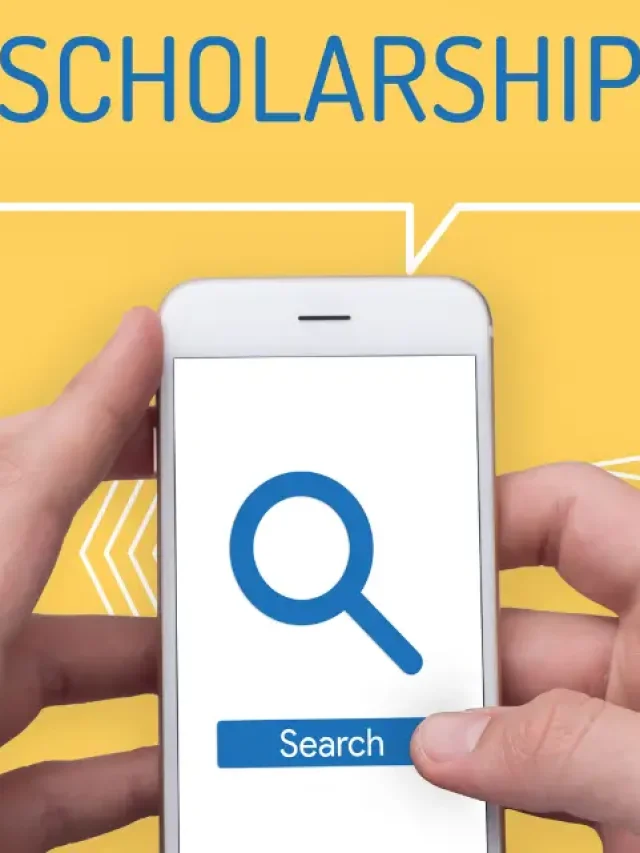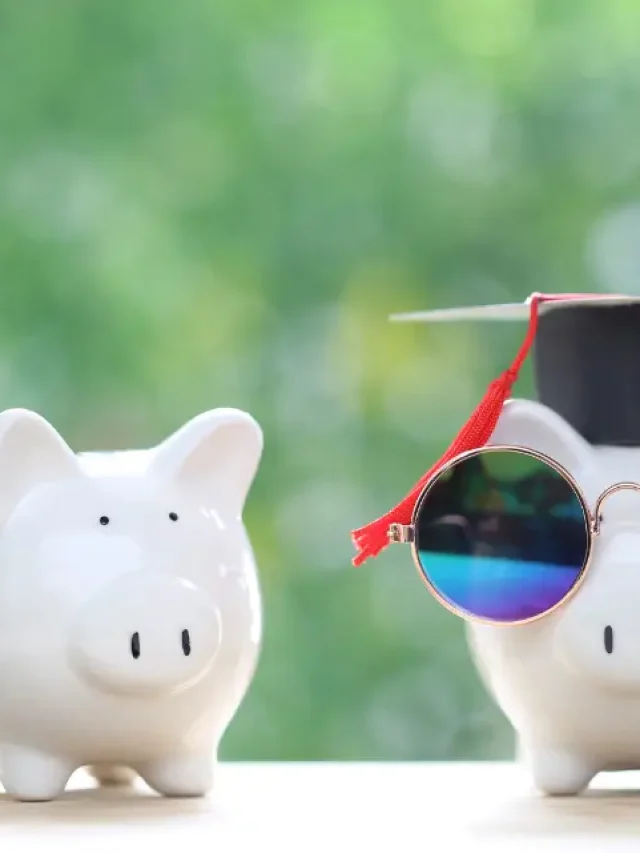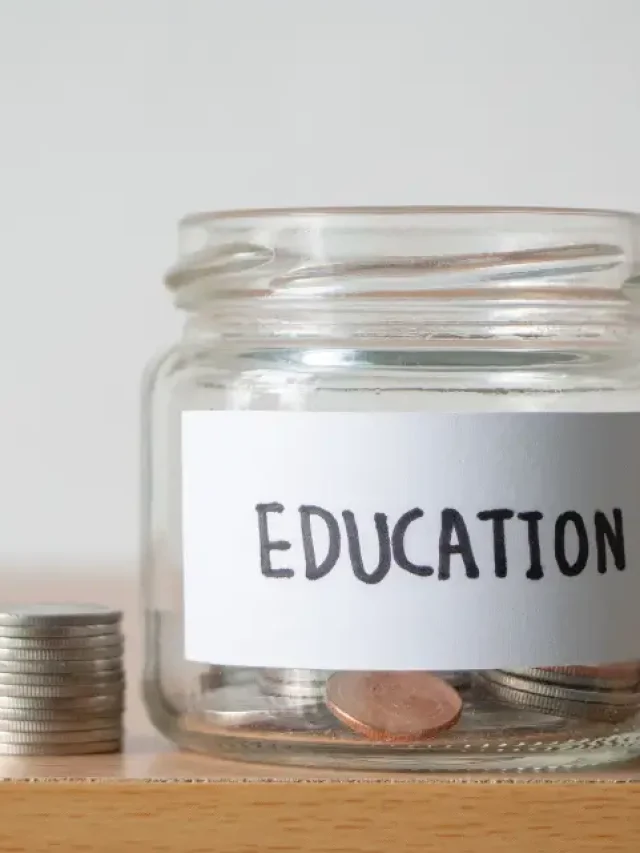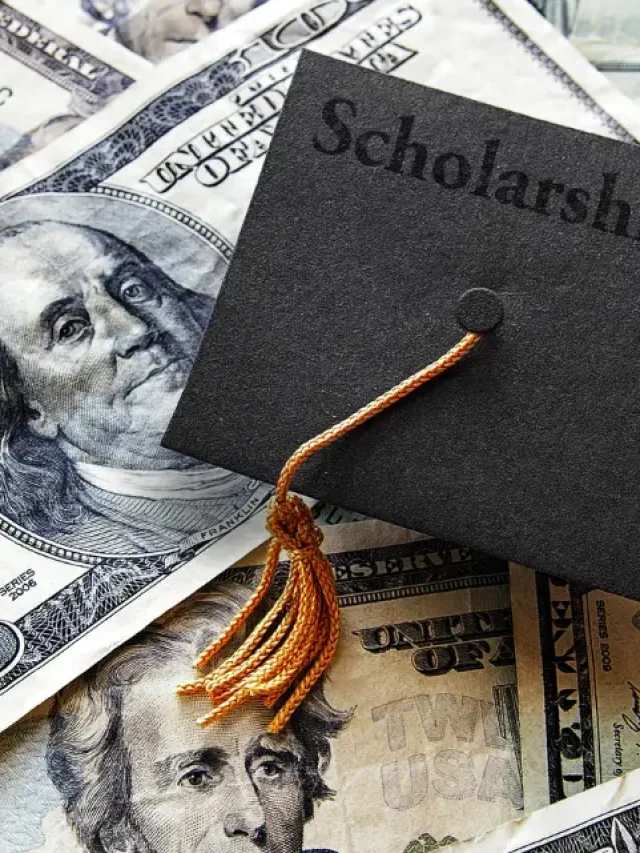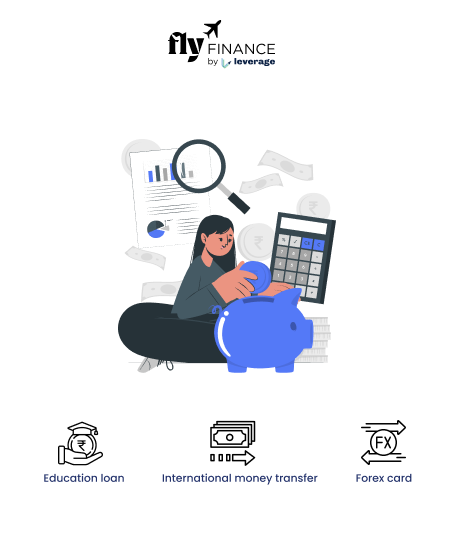How to Spot Fake Money: Travellers and international students are often at higher risk of encountering fake currencies. These are used at tourist shops and some currency exchange locations. The US Dollars, British Pounds and Mexican Pesos are some of the most counterfeit currencies globally. The Reserve Bank of India also reported detecting 4.27 million counterfeit notes over the last decade, with a significant increase in counterfeit 100 rupee notes. Thus, it becomes imperative to identify and learn how to spot fake money. To know the details, continue reading the blog.
Table of contents
Ways to Identify Fake Dollars
Did you know that the 20-dollar bill is the most commonly counterfeited banknote in the United States? Subsequently, the USD 100 bill is more frequently counterfeited overseas. Over USD 147 million fake US currency was reported in circulation globally as of 2015.
To spot counterfeit dollars, you can use several key techniques that focus on the security features incorporated into genuine banknotes. Here are some effective methods that can help you answer how to spot fake money and identify the difference between the real and fake dollars-
Check for Colour-Shifting Ink
The 2004 series of the USD 10, USD 20, USD 50, and USD 100, the number in the lower right corner changes colour when the bill is tilted 45 degrees. The colour shifts from copper to green in a real dollar bill.
- You can also notice the colour shifting on the ‘Bell in the Inkwell’ on a real 100-dollar bill. If there’s no colour change, it means you have spotted a counterfeit 100-dollar bill.
- If you have the 1996 series dollar bills, the real notes will change colour from green to black.
- To identify a counterfeit 10-dollar bill or any other denomination of the 1996 series, you must notice a change in colour from green to black.
- The USD 5 note does not have the colour-shifting ink in both 2004 and 1996 notes.
Look for the Security Thread
Another major feature that can help you identify counterfeit dollars from real notes is the security thread. On fake ones, you will find it printed, while on the real ones, it is embedded vertically in the bill.
- The thread also has the inscription of the value of the dollar bill. It is visible when you hold it in light. It means you will notice 100 if it’s a 100-dollar bill or 10 if it’s a 10-dollar bill.
- Each thread has a unique position. In the 2004 series, the security thread is on the left of the portrait of the 100-dollar and 20-dollar bills. On USD 50,10, and 5, the security thread is on the right.
- It will glow a different colour in UV lights. USD 100 will glow pink, USD 50 will glow yellow, USD 20-dollar will glow green, USD 10 will glow orange, and USD 5 will glow blue colour under the UV light.
Examine the Watermark
All the Federal Reserve Notes have a visible watermark on either side when you hold the bill in light. In both 2004 and 1996 style US dollars, you can observe Franklin’s watermark on a 100-dollar bill.
- The Watermark of Grant is visible on the 50-dollar bill.
- Jackson’s and Hamilton’s watermarks must be visible on a real 20-dollar and 10-dollar bill respectively.
- On a real 5-dollar bill of the 2004 series, a large 5 is visible on the right of Lincoln’s portrait, and a vertical “5 5 5” is visible on the left side when you hold the note in light. However, in the 1996 series, only Lincoln’s watermark is visible.
Look for Microprinting
Microprinting is one of the techniques that can’t be copied by counterfeiters on fake US currency. It involves printing text or patterns in an extremely small font that appears like a solid line to the naked eye. Here’s what is printed on dollar bills to help you spot fake currency from the real ones-
| USD Currency | Here’s What is Microprinted on US Dollars |
| USD 100 | – “THE UNITED STATES OF AMERICA” along Franklin’s collar- Small “100” in the note’s vertical border- “USA” along the bottom of Franklin’s portrait- “ONE HUNDRED USA” along the golden quill |
| USD 50 | – “THE UNITED STATES OF AMERICA” along Grant’s collar- “FIFTY” alongside borders- “50”, “USA”, and “FIFTY” in two blue stars to the left of the portrait |
| USD 20 | – “THE UNITED STATES OF AMERICA 20” in the border below the Treasurer’s signature- “USA TWENTY” to the right of the portrait- Borders of “USA20” in the beginning part of the ribbon |
| USD 10 | – “THE UNITED STATES OF AMERICA” below Hamilton’s portrait- “USA 10” beneath the torch to the left of the portrait- “TEN DOLLARS” along the side of the borders |
| USD 5 | – “E Pluribus Unum” at the top of the eagle’s shield to the right of the portrait- “USA” between columns of the eagle’s shield- “FIVE DOLLARS” alongside borders – On the back side, “USA FIVE” is microprinted on the edge of purple 5 |
Besides the above-mentioned features, fake currency bills often show blurriness or smudging, especially around the edges and fine details. Counterfeit bills also have uneven spacing or different ink colours. By using these techniques, you can easily spot fake currency and reduce the chances of accepting counterfeit US Dollars.
Also Read: Know all about the cheapest currency exchange at attractive rates and multiple options for Indians travelling abroad for leisure or higher studies.
Ways to Identify Fake Euros
The 20-euro and 50-euro notes are the most counterfeited denominations in the Eurozone. In 2015, around 999,000 euro banknotes were counterfeit, with 46.2% of those being EUR 20 notes. It is important to be aware and learn how to spot counterfeit euros. Some of them are common as discussed for fake dollars-
- The paper of Euro banknotes consists of pure cotton. It should feel firm and crisp. However, it’s a fake note if the texture feels limp or waxy.
- All real euro notes will have a security thread embedded in the note. Besides, the word “EURO” and the value of the note will be microprinted on the stripe. For example, on a fake 500-euro note, you won’t see “EURO 500” in tiny letters on the thread.
- You can also check for the watermark by holding the euro banknotes in light. If you notice the transitions between the light and dark parts, it’s not fake currency.
Here are some other features security features of euro banknotes to help you answer how to spot fake money and differentiate real and counterfeit pounds-
Notice a Change in the Hologram Stripe
The hologram stripe on a Euro note is a security feature designed to prevent counterfeiting. It’s a vertical strip that runs through the centre of the banknote and changes appearance depending on how you tilt it.
The hologram on the note should change between the denomination and a € symbol on a coloured rainbow background when tilted. Fake holograms usually do not exhibit this dynamic change.
- To identify a fake 100-euro note from the New Europa Series, the portrait of Europa (the figure on the watermark) appears on the hologram stripe when tilting the note.
- The stripe also reveals a window and the value of the banknote on 50, 100, 200, and 500-euro notes.
Use Detection Tools
Using counterfeit counterfeit detector pens is one of the best ways to spot fake money. These pens can verify the magnetic and UV features of a banknote. If the ink turns dark when marked, the note may be counterfeit. When examining a Euro note under ultraviolet light, look for these key indicators-
- Paper Glow: The paper itself should not glow.
- Hidden Fibres: Embedded red, blue, and green fibres should be visible.
- Front Side: The European Union flag should appear green with orange stars. Besides, the ECB President’s signature should turn green and the large stars and small circles in the centre should glow.
- Back Side: The map, bridge, and value numeral should appear in yellow or green.
Look for Glossy Stripe
On the 5-euro, 10-euro, and 20-euro notes, a gold-coloured stripe will appear on the back of the note when you tilt it. It also shows the value of the bill and the € symbol. If not, you are most likely to spot a fake 20-euro bill.
Check the Colour Changing Number
All 50, 100, 200, and 500-euro notes will change the colour. When you tilt the note, the numeral value on the backside will change from purple to olive green or brown. This can help you identify one of the most counterfeited fake 50 Euros.
Thus, all the features mentioned can help you effectively identify counterfeit euro banknotes, including the fake 200-euro note and protect yourself from fraud. If you suspect that you have received a counterfeit euro note, report it to local authorities or a bank. Counterfeit notes cannot be exchanged for real currency.
Also Read: Planning to exchange currencies at the airport? Save yourself by paying huge fees and learn all about airport currency exchange rates.
Ways to Identify Fake Pounds
In the UK, the 20-pound note is the most counterfeited, accounting for 85.6% of the 347,000 counterfeit banknotes removed from circulation in 2016, with a total face value of GBP 7.5 million. Counterfeiters constantly evolve their techniques, so staying informed about the latest security features is essential to identify counterfeit pound notes.
Some of the common security features are checking the correct foil patch colour and design, looking if the silver foil patch is there or not, look for the UV number and polymer material. All real pounds are made of flexible polymer with raised print on “Bank of England” and the value of the note. Let’s find out how to spot fake money used in the UK (pounds) in this section-
Check the Foil Patch
Looking for the correct foil patch colour and design is an important way of identifying fake pounds. The real notes will have a green for GBP 5, copper for GBP 10, purple for GBP 20, and red for GBP 50. Besides, all of these notes display a 3D image of the coronation crown above the see-through window on the front.
- The 5-pound note contains the word “BLENHEIM” on the back, behind the silver crown.
- The 10-pound note contains the letters “JA” on the back, behind the silver crown on the copper foil patch.
- The purple foil patch of the 20-pound note contains the letter “T” on the back, behind the silver crown.
- The red foil patch contains the letters “AT” on the back, behind the silver crown on a 50-pound note.
Look for Colour Changing Border
- Unlike a real pound, the border of the fake 5-pound note will not have a see-through window change from purple to green when tilted.
- A fake 10-pound note will not have a colour-changing quill. On a real note, it changes from purple to orange when tilted.
Notice the Monarch’s Portrait
To spot fake pounds, you can also look for the Monarch’s portrait in the see-through window. It’s likely counterfeited pounds if you are unable to see it. All real pounds will have a portrait of King Charles III or Queen Elizabeth II printed on the window.
Besides, a fake 5-pound note will not have ‘£5 Bank of England’ printed twice around the edge. You’ll also not notice ‘£10 Bank of England’, ‘£20 Bank of England’, and ‘£50 Bank of England’ on fake twenty-pound notes and counterfeit 50-pound notes.
Check the UV Number
Under the UV light, all real pounds will appear in a bright red and green colour along with the value of the bill. Make sure to use a good-quality UV light and check the fake pounds against a duller background.
- The number ‘5’ appears in bright red and green under UV light on a 5-pound note.
- The number ‘10’ shows in bright red and green under UV light on a 10-pound note.
- The number ‘20’ appears in bright red and green under UV light on a 20-pound note.
- The number ‘50’ appears in bright red and green under UV light on a 50-pound note.
To prevent accepting the most counterfeited 20 and 50-pound notes, always check for these features. Use a UV light to verify the numbers, feel for raised print, and ensure the print quality is sharp and clear.
This was all about answering the frequently asked question- How to Spot Fake Money. If you are wondering what to do with a counterfeit currency, know that you don’t have to accept the fake currency. Immediately inform the police or relevant authorities. Take the note to a bank for proper handling. Remember any details about the person who passed it to aid investigations.
FAQs
To detect fake currency, you must look for features like watermarks, security threads, colour-shifting ink, and microprinting. Genuine notes have distinct textures and sharp print quality.
Counterfeit currency is a global issue, with millions of fake notes circulating, particularly in higher denominations like USD 20, GBP 20, and EUR 20.
The best way to check is to follow the ‘look, feel, and tilt’ method. Genuine currency has a specific texture and raised print. Run your fingers over the note to feel for these features.
Some of the latest security features added are micro printing, unique paper composition and the 3D ribbon on USD 100-dollar bills. These features make US currency increasingly difficult to counterfeit as technology evolves.
To spot counterfeit euro notes, check for these signs: feel the texture for raised print, look for a watermark and security thread, and tilt the note to see colour changes.
Key security features of Indian currency notes include a security thread, watermark, micro-lettering, and intaglio printing (also called the raised print that can be felt, and a fluorescent Ink that glows under UV light.
If you receive a suspected counterfeit note, immediately inform the police or relevant authorities. Take the note to a bank for proper handling. Remember any details about the person who passed it to aid investigations.
Follow Us on Social Media

